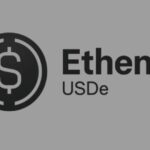A standard and rigorous review process, which includes legal, compliance, and technical security, is in place at Coinbase for each token that is listed on the exchange.
On Saturday, Brian Armstrong, the CEO of Coinbase, the world’s third-largest crypto exchange, published the exchange’s token listing process. In an X post, it was noted by Armstrong that the move aims to bolster the transparency of Coinbase’s listing process. He wrote:
“…listings are free and merit-based. Every asset is evaluated against the same standards.”
Coinbase’s Token Listing Process
According to the blog post titled ‘A Guide to the Digital Asset Listing Process at Coinbase,’ five key steps are involved:
The first step involves the submission of an application. An online questionnaire is filled out by project developers, which asks for key information ranging from the whitepaper and tokenomics to the team’s background and source code.
Based on the submission, business factors such as market demand, community traction, and the technical requirements of integrating with the exchange are assessed by Coinbase.
The application then undergoes a thorough review process by Coinbase’s legal, compliance, and technical security teams. From a legal perspective, an analysis is primarily performed by Coinbase to determine whether a token will potentially be considered a security.
The token’s on-chain activity and token distribution are also investigated by the exchange to ward off consumer safety risks and financial crime.
Additionally, a security check for technical vulnerabilities is run by the exchange by reviewing the contract code, design, and operational risks. In the case of new blockchains, aspects like technical design, consensus mechanism, network resilience, and governance models are evaluated by Coinbase.
The token issuers are kept apprised of the review process via emails or phone calls by the exchange. Once a token is approved by the Core review teams, it starts trading on Coinbase after technical integration is completed by the exchange.
“Our [listing] process is thorough because our standards are designed to protect customers, support healthy markets, and give projects the strongest possible foundation for long-term success.”
The blog post notes:
The Token Listing Timeline
Generally, about a week is taken by Coinbase to conduct due diligence on a token. Once the token is approved, it takes the exchange around two weeks for the technical integration to be completed to enable trading.
The post noted that in general, a token is listed by the exchange in less than 30 days from review. However, the timeline can be significantly shorter or longer, based on factors such as the token’s complexity, whether its network is supported, the responsiveness of the project team, and the time it takes to complete the technical requirements for trading and custody.
Furthermore, a token’s listing priority and timeline also depend on Coinbase’s assessment of its demand, traction among holders, community sentiment, and the team’s track record.
After a token is approved for listing, a phased rollout is ensured by Coinbase. First, users are only allowed to deposit tokens to build liquidity.
Then, limit orders are collected for at least 10 minutes to determine an indicative opening price for the token. The auction is concluded either with a matching trade or an opening quote in case of no match.
This is followed by the trading state, where the token can begin with either limit-only orders or full trading.
Common Reasons for Listing Delays
The delay of a token’s listing is contributed to by three major issues.
The regulatory risk profile of a project is increased if its public statements do not clearly state the token’s purpose, governance rights, and real-world usage. For instance, projects that claim their token is ‘going to the moon’ without evidence to back the claim face challenges with listing their token on Coinbase.
Secondly, from the blockchain security perspective, the degree of centralization and single points of control are evaluated by Coinbase to assess risk.
Lastly, delays in the review process are faced by projects that submit incomplete applications. Delays can also be caused by a failure to inform Coinbase of any major changes in the project during the review.















